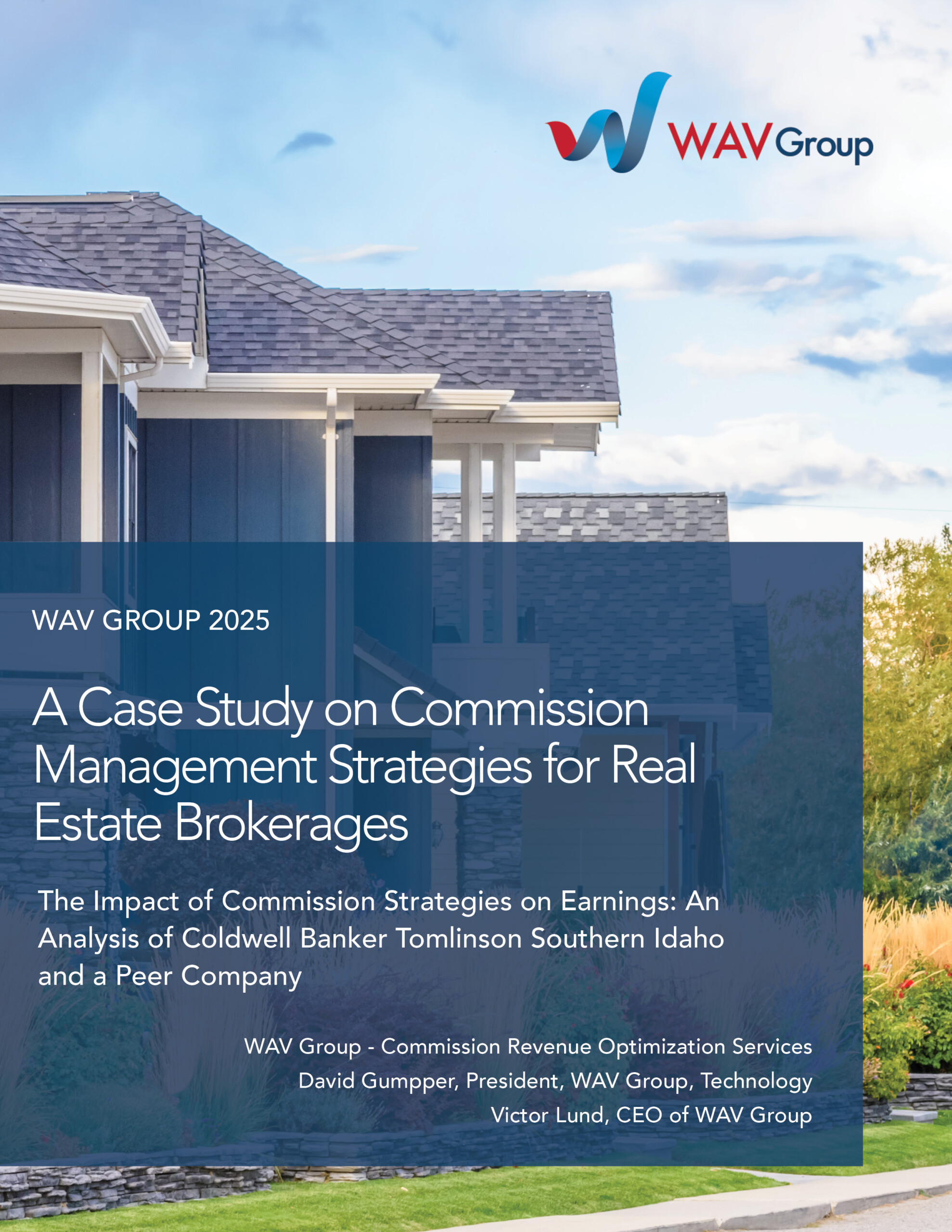 Most brokerage leaders know their commission plans play a big role in agent recruiting and retention. But far fewer realize how much those same plans can either erode or elevate profitability.
Most brokerage leaders know their commission plans play a big role in agent recruiting and retention. But far fewer realize how much those same plans can either erode or elevate profitability.
WAV Group has conducted dozens of commission plan analyses for brokerages of all sizes, revealing one consistent truth: outdated, overly complex, or misaligned compensation models are often the silent killer of brokerage margins. In contrast, brokerages that take a data-driven approach to commission management often discover untapped profitability, sometimes increasing broker dollars by 30% or more without sacrificing competitiveness.
Our latest case study dives into two real-world brokerage examples. One firm came to WAV Group looking to validate a newly modeled commission structure; another sought insight into whether its proposed plan would improve financial performance. In both cases, leadership wanted clear, objective data before rolling out changes that could impact culture, retention, and revenue.
Here’s what we found:
- Plan consolidation matters. One firm reduced dozens of commission permutations down to three structured tiers—each designed around agent performance, GCI thresholds, and business type (e.g., relocation, company-generated). This simplification allowed for clear modeling of agent earnings and broker dollar outcomes.
- Profitability gains can be substantial. When modeled against historical data, the simplified commission structure showed an increase in total company earnings of approximately 30%, even while most agents saw only a modest decrease in income (5% or less).
- Blended models outperform rigid plans. By applying blending techniques—where commission levels scale during the year rather than resetting annually—firms were able to ease transition risk and reduce the severity of income swings for agents. This also mitigated resistance when implementing changes.
- Customization is critical. In the second brokerage case, leadership discovered that a one-size-fits-all plan wouldn’t work across the counties they serve. Regional differences in transaction volume and average sale price meant that a flat adjustment could have unintentionally penalized productive teams in slower markets.
- Communication strategy is key. Both brokerages underscored the importance of having insight into the outcomes of their models. The process enabled them to think and build an internal narrative around why changes were being made, whether to anchor the company’s growth, invest in agent support, or increase the long-term value of the brand. It just was not for profitability’s sake. WAV Group helped them test models privately before rolling out any public messaging.
The shift from “set it and forget it” to active commission optimization isn’t just a financial play; it’s a strategic move that aligns agent incentives with brokerage goals. And in an environment where margins are tight and top producers have options, having a clear, fair, and competitive compensation model can make all the difference.
Click Here to download the full case study
For $50 off your copy today, use code CRO2025
Explore how modern commission strategies can drive profitability, simplify operations, and improve agent alignment.
If your firm hasn’t performed a commission analysis in the past few years, now is the time. WAV Group’s Commission Revenue Optimization service can help you model different approaches and choose the one that fits your business best.
Reach out below to start the conversation – we’re here to help!




